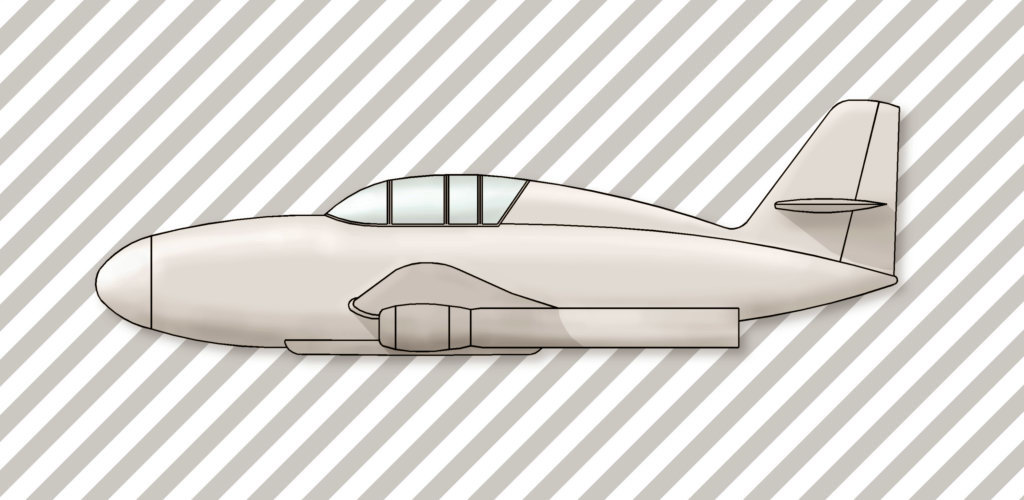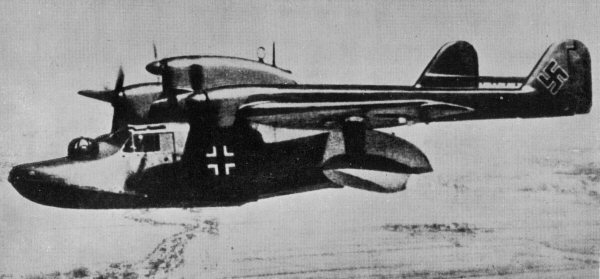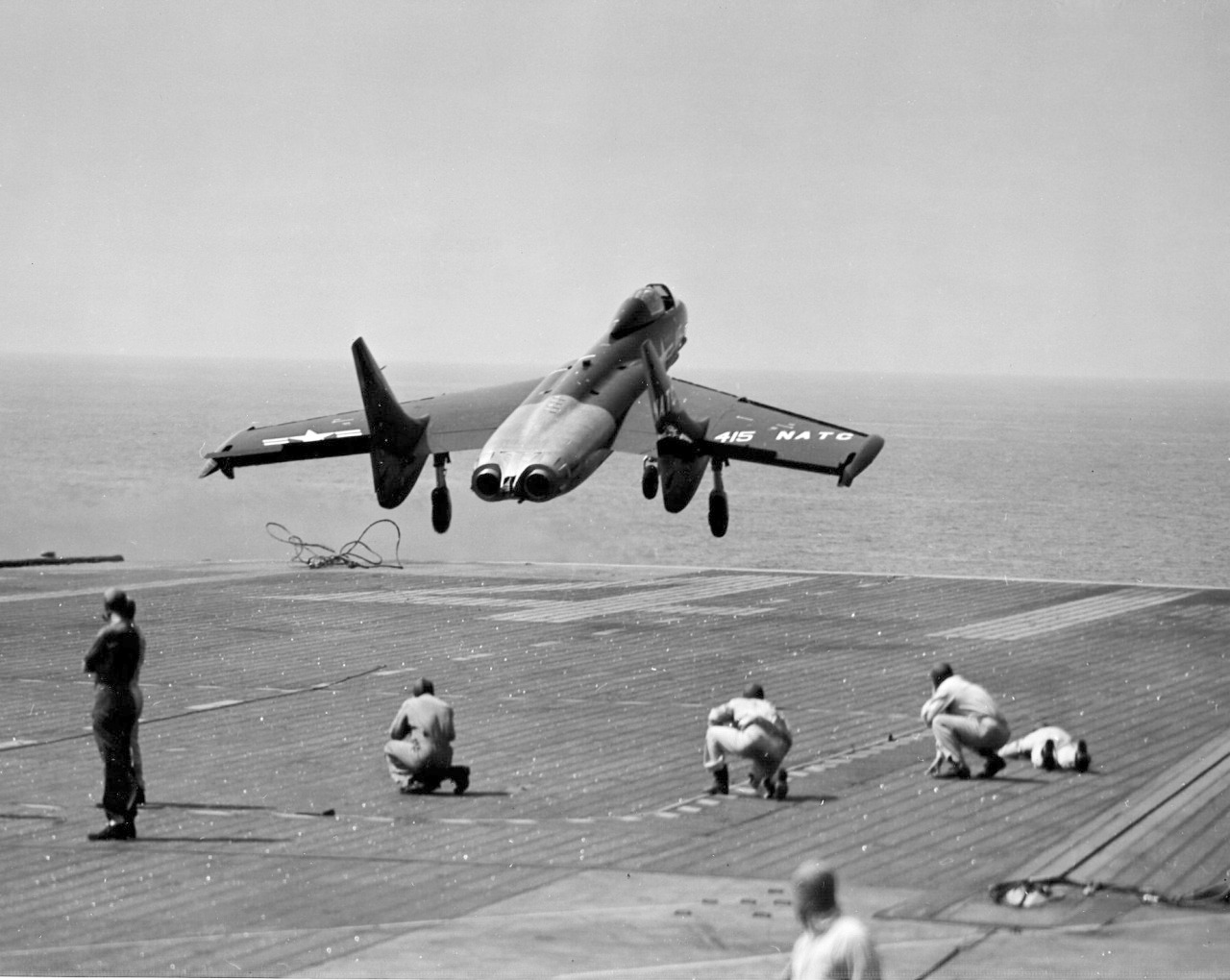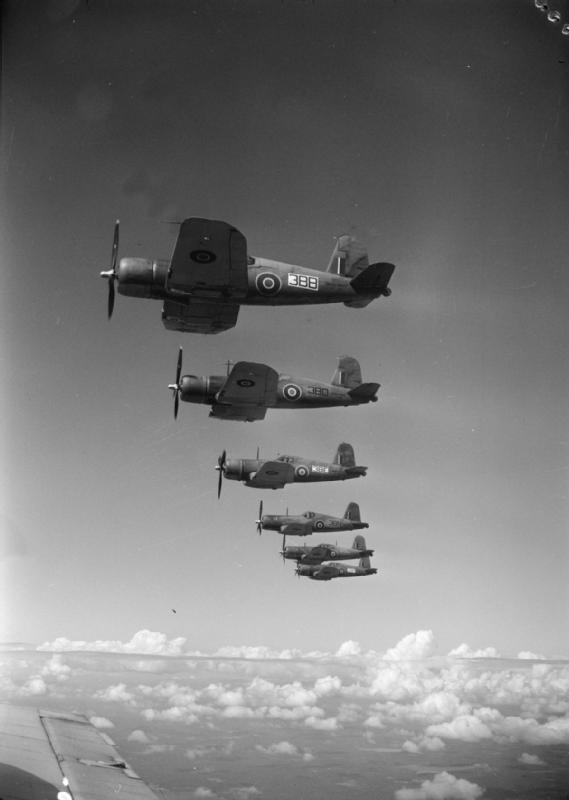|
Woldemar Voigt (engineer)
Woldemar Voigt (10 February 1907 – June 1980) was a German aerospace engineer, who was responsible for some of the advanced swept wing German jet-powered aircraft at the end of World War II. Early life His grandfather was the German physicist Woldemar Voigt (1850-1919), known for Voigt notation, Voigt profile and the Voigt effect, and who introduced the term tensor in 1898. He was born in February 1907 in Göttingen; he was the oldest of four brothers. His father was Karl Voigt (1879–1965). He studied at technical high school in Darmstadt, in the south of Hesse. Career Klemm He worked for Klemm, designing the Klemm Kl 35. Messerschmitt He joined Messerschmitt, in Bavaria, in 1933. He was the project leader for the designs of the Messerschmitt Me 264 (four-engined bomber), Messerschmitt Me 328, and the infamous rocket-engined Messerschmitt Me 163 Komet. He oversaw the design of the swept-wing Messerschmitt P.1101 jet fighter, which was never built (by the Germans), bu ... [...More Info...] [...Related Items...] OR: [Wikipedia] [Google] [Baidu] |
Göttingen
Göttingen (, , ; nds, Chöttingen) is a college town, university city in Lower Saxony, central Germany, the Capital (political), capital of Göttingen (district), the eponymous district. The River Leine runs through it. At the end of 2019, the population was 118,911. General information The origins of Göttingen lay in a village called ''Gutingi, ''first mentioned in a document in 953 AD. The city was founded northwest of this village, between 1150 and 1200 AD, and adopted its name. In Middle Ages, medieval times the city was a member of the Hanseatic League and hence a wealthy town. Today, Göttingen is famous for its old university (''Georgia Augusta'', or University of Göttingen, "Georg-August-Universität"), which was founded in 1734 (first classes in 1737) and became the most visited university of Europe. In 1837, seven professors protested against the absolute sovereignty of the House of Hanover, kings of Kingdom of Hanover, Hanover; they lost their positions, but be ... [...More Info...] [...Related Items...] OR: [Wikipedia] [Google] [Baidu] |
Messerschmitt Me 328
The Messerschmitt Me 328 was originally designed as a parasite aircraft to protect ''Luftwaffe'' bomber formations during World War II. During its protracted development, a wide variety of other roles were suggested for it. Late in the war, the design was resurrected for consideration as a ''Selbstopfer'' (suicide weapon) aircraft, but was judged unsuitable even for this purpose. The tiny fighter was to have been propelled by pulsejets, but the unsuitability of these engines doomed the Me 328 from the start. History Design The aircraft was designed as Messerschmitt project P.1073 in 1941, and was originally conceived as a cheap and simple escort fighter, to either be towed aloft by a Heinkel He 177 heavy bomber or Junkers Ju 388 using a semi-rigid bar (the ''Deichselschlepp'', which was also considered for towing winged auxiliary fuel tanks), or carried on a Me 264 in a ''Mistel'' type fashion. Three versions were proposed: an unpowered glider, a version powered by Argus pulsej ... [...More Info...] [...Related Items...] OR: [Wikipedia] [Google] [Baidu] |
Robert Lusser
Robert Lusser (19 April 1899 – 19 January 1969) was a German engineer, aircraft designer and aviator. He is remembered both for several well-known Messerschmitt and Heinkel designs during World War II, and after the war for his theoretical study of the reliability of complex systems. In the post-war era, Lusser also pioneered the development of modern ski bindings, introducing the first teflon anti-friction pads to improve release. Biography Lusser was born in Ulm. As a pilot, he won the International Light Aircraft Contest in France in 1928. Next he participated in three out of four FAI International Tourist Plane Contests, flying Klemm aircraft, and completed all three taking quite high places (Challenge 1929: 4th, Challenge 1930: 13th, and Challenge 1932: 10th). In August 1930 he was 3rd in the handicapped race ''Giro Aereo d'Italia'' in Italy. Lusser's first jobs were with the Klemm and Heinkel companies, before joining the newly relaunched ''Bayerische Flugzeugwerke'' (Bavar ... [...More Info...] [...Related Items...] OR: [Wikipedia] [Google] [Baidu] |
Boeing
The Boeing Company () is an American multinational corporation that designs, manufactures, and sells airplanes, rotorcraft, rockets, satellites, telecommunications equipment, and missiles worldwide. The company also provides leasing and product support services. Boeing is among the largest global aerospace manufacturers; it is the third-largest defense contractor in the world based on 2020 revenue, and is the largest exporter in the United States by dollar value. Boeing stock is included in the Dow Jones Industrial Average. Boeing is incorporated in Delaware. Boeing was founded by William Boeing in Seattle, Washington, on July 15, 1916. The present corporation is the result of the merger of Boeing with McDonnell Douglas on August 1, 1997. Then chairman and CEO of Boeing, Philip M. Condit, assumed those roles in the combined company, while Harry Stonecipher, former CEO of McDonnell Douglas, became president and COO. The Boeing Company's corporate headquarters is in Chicago, Illi ... [...More Info...] [...Related Items...] OR: [Wikipedia] [Google] [Baidu] |
Richard Vogt (aircraft Designer)
Richard Vogt (19 December 1894 - January 1979) was a military German aircraft designer who was known for his original airframes, including the asymmetrical BV 141 during World War II. After the war, he moved to the United States as part of Operation Paperclip, where he worked on American military aircraft design. Early life Richard Vogt was born in Schwäbisch Gmünd, a town in the Kingdom of Württemberg, which at that time was a constituent state of the German Empire. He was the seventh child of twelve siblings. He was admitted to a school of universal literacy education in Stuttgart-Cannstatt. When he was a student at the school, he had an opportunity get to know Ernst Heinkel. In 1912, when he was 18 years old, Vogt built his first aeroplane. With the help of a friend and under the eye of Heinkel, he attempted unsuccessfully to fly it just outside Mutlangen, a neighboring town to Schwäbisch Gmünd. World War I After school Vogt worked for a year at an engine factory in Lu ... [...More Info...] [...Related Items...] OR: [Wikipedia] [Google] [Baidu] |
List Of German Inventors And Discoverers
---- __NOTOC__ This is a list of German inventors and discoverers. The following list comprises people from Germany or German-speaking Europe, and also people of predominantly German heritage, in alphabetical order of the surname. For the list containing items and ideas invented and/or discovered by Germans, see list of German inventions and discoveries. A * Ernst Abbe: Invented the first refractometer, and many other devices. Donated his shares in the company Carl Zeiss to form Carl-Zeiss-Stiftung, still in existence today. * Franz Carl Achard: Developed a process to produce sugar from sugar beet. Built the first factory for the process in 1802. * Robert Adler: Invented a better television remote control. * Konrad Adenauer: Invented soya sausage (1916; "Kölner Wurst") and, together with Jean and Josef Oebel, oarsewholemeal bread (1917; Kölner Brot). * Georgius Agricola: Named "the father of mineralogy". * Wilhelm Albert: Invented the wire rope 1834. * Kurt Alder: Disc ... [...More Info...] [...Related Items...] OR: [Wikipedia] [Google] [Baidu] |
List Of German Aircraft Projects, 1939–45
A ''list'' is any set of items in a row. List or lists may also refer to: People * List (surname) Organizations * List College, an undergraduate division of the Jewish Theological Seminary of America * SC Germania List, German rugby union club Other uses * Angle of list, the leaning to either port or starboard of a ship * List (information), an ordered collection of pieces of information ** List (abstract data type), a method to organize data in computer science * List on Sylt, previously called List, the northernmost village in Germany, on the island of Sylt * ''List'', an alternative term for ''roll'' in flight dynamics * To ''list'' a building, etc., in the UK it means to designate it a listed building that may not be altered without permission * Lists (jousting), the barriers used to designate the tournament area where medieval knights jousted * ''The Book of Lists'', an American series of books with unusual lists See also * The List (other) * Listing (di ... [...More Info...] [...Related Items...] OR: [Wikipedia] [Google] [Baidu] |
Annapolis, Maryland
Annapolis ( ) is the capital city of the U.S. state of Maryland and the county seat of, and only incorporated city in, Anne Arundel County. Situated on the Chesapeake Bay at the mouth of the Severn River, south of Baltimore and about east of Washington, D.C., Annapolis forms part of the Baltimore–Washington metropolitan area. The 2020 census recorded its population as 40,812, an increase of 6.3% since 2010. This city served as the seat of the Confederation Congress, formerly the Second Continental Congress, and temporary national capital of the United States in 1783–1784. At that time, General George Washington came before the body convened in the new Maryland State House and resigned his commission as commander of the Continental Army. A month later, the Congress ratified the Treaty of Paris of 1783, ending the American Revolutionary War, with Great Britain recognizing the independence of the United States. The city and state capitol was also the site of the 1786 An ... [...More Info...] [...Related Items...] OR: [Wikipedia] [Google] [Baidu] |
Vought F7U Cutlass
The Vought F7U Cutlass is a United States Navy carrier-based jet fighter and fighter-bomber of the early Cold War era. It was a tailless aircraft for which aerodynamic data from projects of the German Arado and Messerschmitt companies, obtained at the end of World War II through German scientists who worked on the projects, contributed, though Vought designers denied any link to the German research at the time.Angelucci 1987, p. 447. The F7U was the last aircraft designed by Rex Beisel, who was responsible for the first fighter ever designed specifically for the U.S. Navy, the Curtiss TS-1 of 1922. Regarded as a radical departure from traditional aircraft design, the Cutlass suffered from numerous technical and handling problems throughout its short service career. The type was responsible for the deaths of four test pilots and 21 other U.S. Navy pilots. Over one quarter of all Cutlasses built were destroyed in accidents. Design and development The Cutlass was Vought's entr ... [...More Info...] [...Related Items...] OR: [Wikipedia] [Google] [Baidu] |
Vought
Vought was the name of several related American aerospace firms. These have included, in the past, Lewis and Vought Corporation, Chance Vought, Vought-Sikorsky, LTV Aerospace (part of Ling-Temco-Vought), Vought Aircraft Companies, and Vought Aircraft Industries. The first incarnation of Vought was established by Chance M. Vought and Birdseye Lewis in 1917. In 1928, it was acquired by United Aircraft and Transport Corporation, which a few years later became United Aircraft Corporation; this was the first of many reorganizations and buyouts. During the 1920s and 1930s, Vought Aircraft and Chance Vought specialized in carrier-based aircraft for the United States Navy, by far its biggest customer. Chance Vought produced thousands of planes during World War II, including the F4U Corsair. Vought became independent again in 1954, and was purchased by Ling-Temco-Vought (LTV) in 1961. The company designed and produced a variety of planes and missiles throughout the Cold War. Vought wa ... [...More Info...] [...Related Items...] OR: [Wikipedia] [Google] [Baidu] |
NATO School
The NATO School Oberammergau in southern Germany is NATO's key training facility on the operational level. The School started with two courses in 1953 and now offers over 100 different courses to Alliance members and partners on subjects related to NATO's policies, strategies, missions and operations. The school conducts multinational military education and individual training in support of current and developing NATO operations, strategy, policy, doctrine and procedures. This includes cooperation, dialogue, and information exchange, as well as education and training, with military and civilian personnel from non-NATO nations. Annually, more than 10,000 students and conference attendees visit the school. Since 1953, more than 200,000 officers, non-commissioned officers and civilians have attended courses at the School. Annually, about 12,000 students and conference attendees visit the School. Curriculum The NATO School Oberammergau provides courses of instruction in nine mai ... [...More Info...] [...Related Items...] OR: [Wikipedia] [Google] [Baidu] |
Oberammergau
Oberammergau is a municipality in the district of Garmisch-Partenkirchen, in Bavaria, Germany. The small town on the Ammer River is known for its woodcarvers and woodcarvings, for its NATO School, and around the world for its 380-year tradition of mounting Passion Plays. History Passion Play The Oberammergau Passion Play was first performed in 1634. According to local legend, the play is performed every ten years because of a vow made by the inhabitants of the village that if God spared them from the effects of the bubonic plague then sweeping the region, they would perform a passion play every ten years. A man traveling back to the town for Christmas allegedly brought the plague with him by accident. The man purportedly died from the plague and it began spreading throughout Oberammergau. After the vow was made, according to tradition, not another inhabitant of the town died from the plague. All of the town members that were still suffering from the plague are said to have recov ... [...More Info...] [...Related Items...] OR: [Wikipedia] [Google] [Baidu] |







